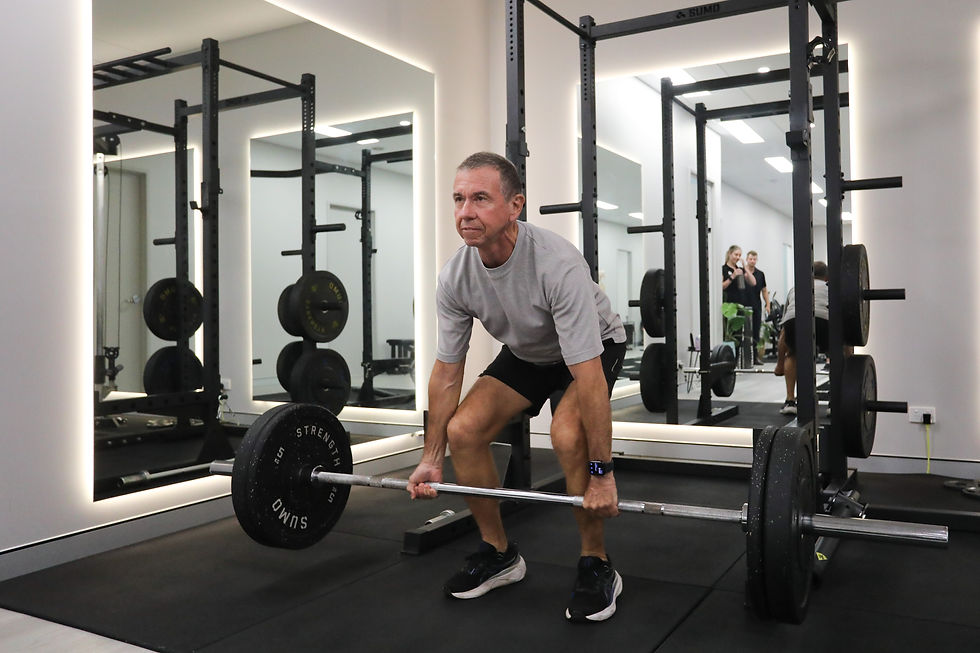Regaining Confidence with the Conventional Barbell Deadlift
- jacob sciacca
- Apr 9, 2024
- 2 min read
Body:
The Barbell Deadlift stands as one of the most commonly performed exercises in gym routines. It mirrors movements we execute daily to lift objects off the ground. However, for many, it can lead to soreness, avoidance due to past injuries, or apprehension due to pain or fear. While not obligatory for everyone, the deadlift offers numerous benefits. In this article, we explore alternative exercises to the deadlift and strategies for easing into its practice.
Conventional Barbell Deadlift
The conventional barbell deadlift boasts unique mechanical traits that enhance functional strength and movement efficiency. It engages major muscle groups—quadriceps, glutes, hamstrings, and lower back—at high contraction rates, aiding in lower limb strength and power development. This exercise has been linked to improved vertical jump performance, muscular force production, and bone mineral density. Executing conventional barbell deadlifts typically involves these steps:
Position shins against the barbell.
Squat down and grasp the barbell just outside knee width.
Maintain a flat (neutral) back, reaching hips back.
Generate tension by tightening your arms and brace your shoulders over the bar.
Push through the floor to lift the barbell, keeping it close as you ascend.
Despite its numerous benefits, the deadlift presents challenges, compounded by its intimidating name. However, with proper coaching, encouragement, and addressing common technique flaws, it can be a rehabilitative exercise for many.
Hex Bar Deadlift
The hexagonal (or trap) bar deadlift, a popular variation, offers advantages over the conventional deadlift. Its design, with high and low handle positions, accommodates diverse body types and mobility restrictions. This results in increased knee extensor engagement and reduced stress on the lower back. Thus, the hex bar deadlift mimics the conventional deadlift's movement pattern while providing a more comfortable position for many lifters.
Sumo Deadlift
Another variation, the sumo deadlift, involves a wider stance and turned-out feet, gripping the barbell inside the knees. Compared to the conventional deadlift, it emphasizes quadriceps recruitment, minimizes hamstring engagement, and promotes a more upright torso position. This variation can instil confidence and comfort in individuals struggling with traditional deadlift form.
Lower Body Lifts
In addition to deadlift variations, incorporating lower body strength exercises like squats, split squats, and hip thrusts can aid in returning to deadlift training. These exercises strengthen key muscle groups and promote proper bracing techniques, complementing conventional deadlift practice.
Confidence and Strength
Contrary to popular belief, back pain during deadlifts isn't always due to a weak core. Building confidence and feeling strong are crucial aspects of deadlift training. Core exercises such as planks, side planks, and farmer's carries can bolster strength and self-assurance.
Repetition and Practice
Mastering deadlift technique requires patience and practice. Starting with lighter weights and seeking guidance from health professionals can aid in skill acquisition and technique refinement





Comments